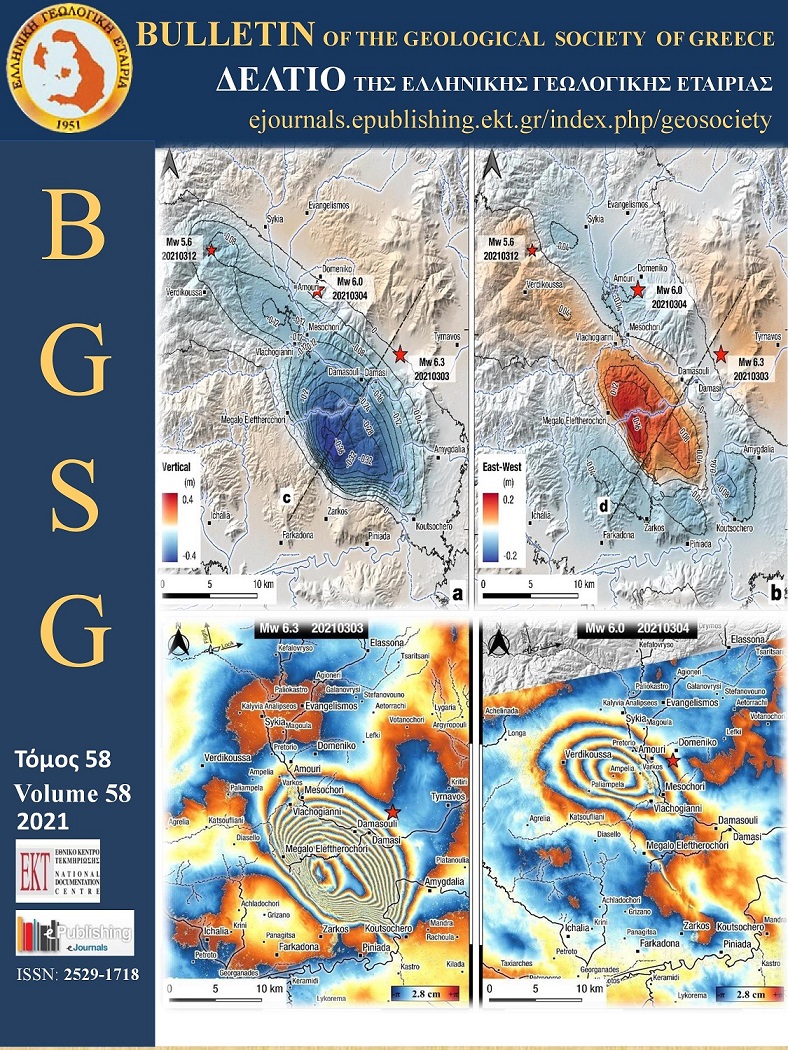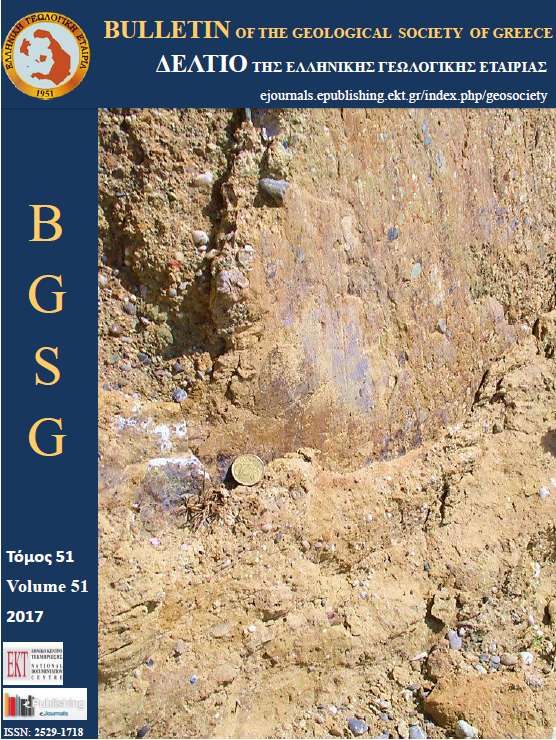The northern Thessaly strong earthquakes of March 3 and 4, 2021, and their neotectonic setting
Περίληψη
A sequence of earthquakes occurred on March 3rd and 4th in Northern Thessaly, northern Greece, associated with previously unknown, blind normal faults within the crystalline Palaeozoic basement of the Pelagonian geotectonic zone. Surficial ground deformation, such as liquefaction phenomena in fluvial plains, as well as soil fissures and rock falls, have been mapped. Geological indications of the unmapped seismic fault, i.e., reactivated shear zones, open cracks, etc., have been identified within the bedrock. Based on geological indications, the main fault projection to the surface could be considered a 15 km NW-SE trending structure and average dip of 45o to the NE. The seismic source of the main shock was modelled, and the Coulomb static stress changes calculated for receiver faults similar to the source. The determination of the active tectonic regime of the region by geodetic data and the well-known faults of NE Thessaly plain are also presented, as well as the revised historical and instrumental seismicity. This earthquake raises new concerns and challenges, revising some established views, such as the status of main stress orientations, the orientation of active tectonic structures, the occurrence of a seismogenic fault in a mountainous massif of crystalline rocks without typical geomorphological expression and the role of blind faults in Seismic Hazard Assessment.
Λεπτομέρειες άρθρου
- Πώς να δημιουργήσετε Αναφορές
-
Chatzipetros, A., Pavlides, S., Foumelis, M., Sboras, S., Galanakis, D., Pikridas, C., Bitharis, S., Kremastas, E., Chatziioannou, A., & Papaioannou, I. (2021). The northern Thessaly strong earthquakes of March 3 and 4, 2021, and their neotectonic setting. Δελτίο της Ελληνικής Γεωλογικής Εταιρείας, 58, 222–255. https://doi.org/10.12681/bgsg.27225
- Ενότητα
- Φυσικές Καταστροφές

Αυτή η εργασία είναι αδειοδοτημένη υπό το CC Αναφορά Δημιουργού – Μη Εμπορική Χρήση 4.0.
Οι συγγραφείς θα πρέπει να είναι σύμφωνοι με τα παρακάτω: Οι συγγραφείς των άρθρων που δημοσιεύονται στο περιοδικό διατηρούν τα δικαιώματα πνευματικής ιδιοκτησίας επί των άρθρων τους, δίνοντας στο περιοδικό το δικαίωμα της πρώτης δημοσίευσης. Άρθρα που δημοσιεύονται στο περιοδικό διατίθενται με άδεια Creative Commons 4.0 Non Commercial και σύμφωνα με την οποία μπορούν να χρησιμοποιούνται ελεύθερα, με αναφορά στο/στη συγγραφέα και στην πρώτη δημοσίευση για μη κερδοσκοπικούς σκοπούς. Οι συγγραφείς μπορούν να: Μοιραστούν — αντιγράψουν και αναδιανέμουν το υλικό με κάθε μέσο και τρόπο, Προσαρμόσουν — αναμείξουν, τροποποιήσουν και δημιουργήσουν πάνω στο υλικό.




